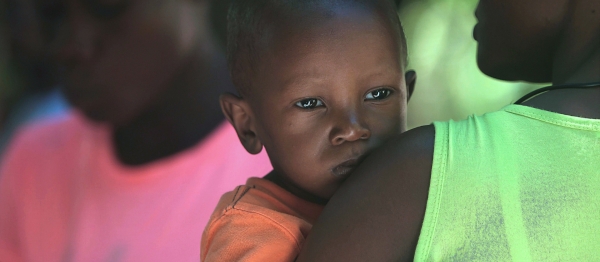
Great news came out of Kenya recently when the Catholic Church there joined child welfare organizations and government authorities in supporting the phase out of children’s residential care institutions and the transition to family-based or community care. Faith-based groups fund a significant portion of orphanages in Kenya, and in Africa as a whole, even though institutions are associated with adverse outcomes for child well-being. This groundbreaking step begins to transform that structure.
More than a half-century ago, the United States shifted from orphanages to foster care as knowledge about child development expanded and the importance of children growing up in loving families came to light. Study after study showed the negative implications of institutionalization on child well-being, while family care, at a fraction of the cost, was found to better support attachment, brain development, executive functioning, behavioral health, and long-term success.
The practice of raising children in orphanages emerged in Medieval Europe and spread to other regions of the globe via missionaries and colonization. Unfortunately, in many parts of the world, orphanages and the shuttling of vulnerable children (especially children with disabilities) into them, quickly displaced traditional practices of extended family care.
In the 1980s and ‘90s, the proliferation of orphanages followed the rise of the HIV/AIDS pandemic on the African continent and the horrific loss of an entire generation of parents. Similarly, after the 2010 earthquake in Haiti, the number of orphanages there exploded from roughly 300 to more than 750. At the same time, donating financial support to, and volunteering with, orphanages came to be viewed by well-meaning Westerners as a tangible way of mitigating crises’ impact on children. Studies estimate that more than $2.5 billion each year is given by U.S. Christians to support residential care for children. Sadly, this dynamic has become deep-seated and difficult to dislodge in many low-income countries and it is estimated that as many as 8 million children currently live in residential care around the world. Why is this the case when children in residential care are at greater risk for neglect, abuse, and trafficking, and lack what they need to meet their full potential?
Children appear to be lost in cultural translation. For instance, many people in the U.S. do not realize that these children are not “orphans” in the Western sense of the word. An estimated 80 percent of children living in orphanages have a living parent and almost all have extended family. The vast majority of kids are in institutions because of poverty, not because they are alone in the world. It is not uncommon for parents who cannot afford nutritious food, access to basic health services or school fees, to see the local orphanage as a place that will provide for their child. And this view may indeed be the case, especially when these institutions become popular recipients of private funding from well-meaning foreigners.
But while children placed in institutions may have basic necessities, they often lack the nurturing that is so fundamental to successful child development. They are frequently cut off from their family and community and may not receive the responsive care and cognitive stimulation that is critical for their optimal brain and social development. In addition, the turnover of caregiving staff and fleeting visits of well-meaning “Voluntourists” – an estimated 4 million a year — increases children’s feelings of loss and abandonment and their risk of abuse.
When children who grow up in orphanages age out, they often struggle to find their place in their home communities. Suicide, substance abuse, prostitution and incarceration are not uncommon for these so-called “Care Leavers,” who lack familial and community supports available to other youth their age.
So, what is being done to remedy this tragedy? The U.S. government is already doing the right thing by working to strengthen families and support the creation of social services systems in low-income countries via foreign assistance funding. But the bulk of international orphanage support comes from private donors.
In general, the U.S. Christian population is not well educated about best practices in orphan care, according to a study commissioned by the Faith to Action Initiative and Changing the Way We Care with support from the GHR Foundation, the MacArthur Foundation and the U.S. Agency for International Development (USAID). Informing this population could play a vital role in shifting their support from caring for children in orphanages to strengthening families.
“Generally, strengthening families is about building their resilience and addressing their unique challenges. Family strengthening, or what is sometimes called family preservation, includes things like: livelihood support, material support, cash payments, food and agricultural support, access to education and health care, daycare, after-school programs, mentoring, special education services, counseling, parent education, support groups, resource centers, youth centers, temporary family shelters, and spiritual support. These solutions help ensure families can properly care for their children, while also decreasing risk of mistreatment, neglect, or abuse.”
— Rethinking Orphan Care, Faith to Action.
Changing the Way We Care and the Faith to Action Initiative are working to improve the way the faith community supports vulnerable children. Things are moving in the right direction although there is still much work to be done. Near the top of the list is raising awareness with the U.S. public that donating to, and volunteering with, orphanages is not the best way to help vulnerable children. Rather, by supporting efforts to strengthen families and communities around the world, donors and volunteers can help children achieve their full health and development potential in safe, nurturing families.
Faith to Action and the Better Care Network offer reliable resources on this topic.
